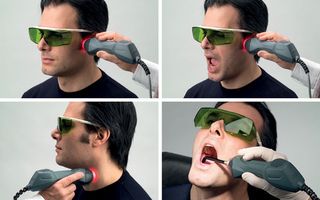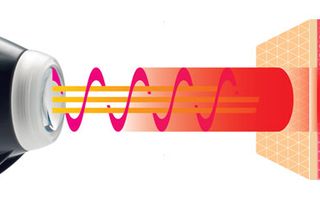Laser Dentistry
Laser technology has been used in medical procedures for some time now. Laser dentistry is quickly becoming a popular method of performing many dental procedures.
Laser therapy means state-of-the-art dentistry and modern patient care all in one. Due to the number of advantages, a laser is now a standard feature of a modern dental practice, and we incorporate laser therapy where needed at our Richmond practice.
Laser can be used for a broad range of treatments including periodontal treatment, crowns and root canal treatment.
Due to its excellence in germ reduction patients can expect a better healing process, less postoperative pain, a more efficient treatment procedure and permanently good clinical results.
Low level laser therapy
Laser is one of the latest innovations in dentistry and has been successfully used for some years now. Part of our commitment to patients is to offer the best technologies and treatments that are available, and laser dentistry is becoming an integral part of our practice.
How does laser dentistry work?
A laser delivers energy in the form of light, and this energy has many applications in dental treatment. Different wavelengths of laser light have different abilities to penetrate and activate tissue, so lasers can be used for cutting or shaping gum and teeth, or in non-invasive, therapeutic treatment aimed at promoting healing, and reducing inflammation and pain.

Multiwave Locked System (MLS)
We use the Multiwave Locked System (MLS), which is a safe, non-invasive treatment that can be used with almost any dental procedure. The MLS laser is a low level laser therapy (LLLT) that promotes healing and reduces inflammation and pain through the combined effect of two different wavelengths. The higher wavelength (905 nanometer) is most effective as reducing pain, while the lower wavelength (808 nanometer) has an immediate effect on inflammation.
Benefits of MLS laser therapy
Lasers are commonly used alongside more traditional procedures because of the unique healing effects on cells and tissue. The laser increases blood flow, produces endorphins and reduces inflammation, all of which mean that you heal faster with less pain. MLS can be used after root canal work, dental implants, extractions or other soft tissue interventions to speed your recovery and lessen the use of analgesics. Laser therapy has a simultaneous effect on many cellular systems:
- Increases the formation of new blood vessels to promote healing
- Stimulates the production of collagen to decrease scar tissue
- Increases the release of energy to cells to promote healing
- Increases lymphatic activity, which directly decreases swelling and oedema
- Reduces the excitability of nerve cells to relieve pain.

TMJ Dysfunction
MLS is particularly effective at treating the pain of TMJ dysfunction. The synchronised wave pattern delivers an efficient and simultaneous effect on pain, contracture, inflammation and oedema. Our TMJ Relief Clinic website offers more information on the use of MLS for TMJ dysfunction. Patients experience a rapid reduction in pain and inflammation with MLS laser therapy.
Learn more about TMJ dysfunction and how laser therapy can help.
TMJ Dysfunction.


